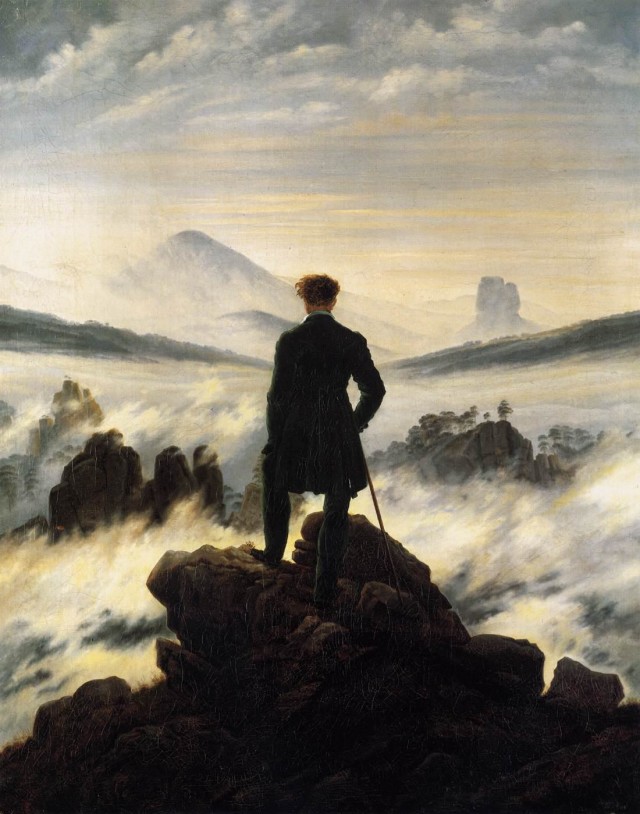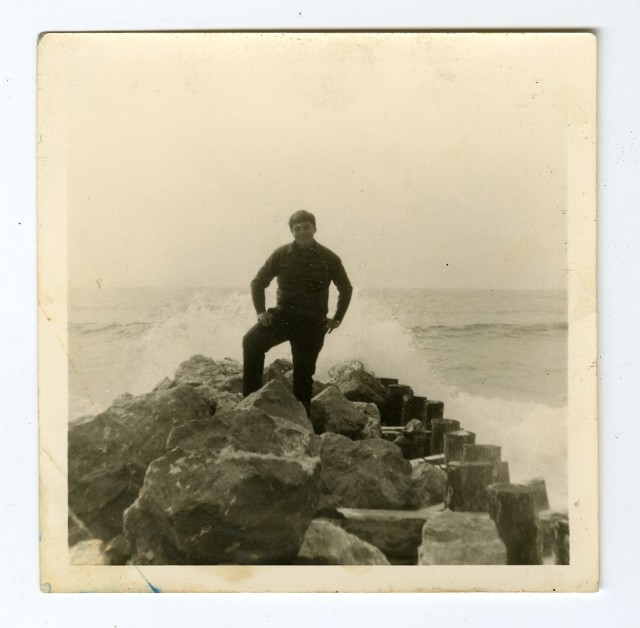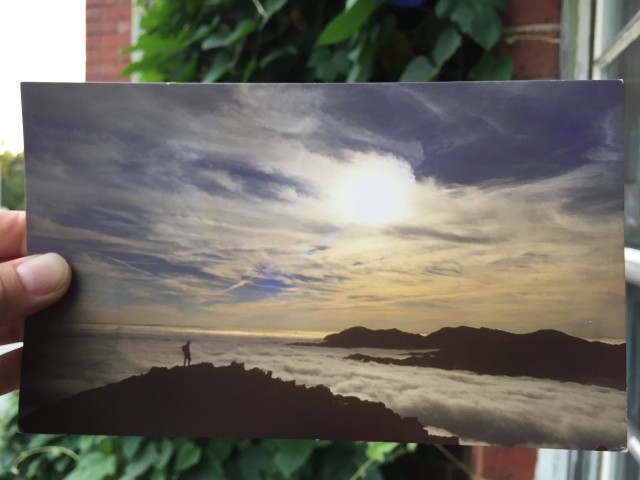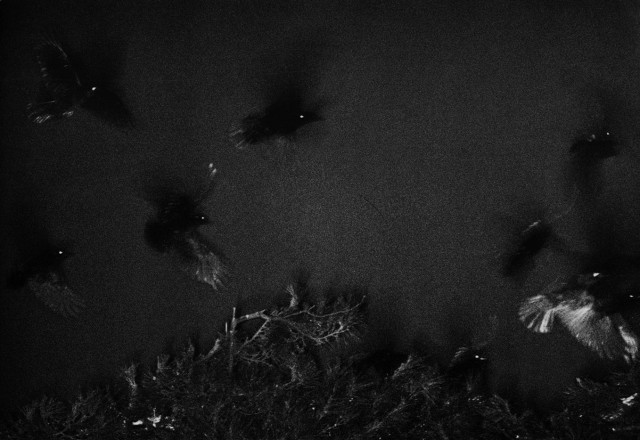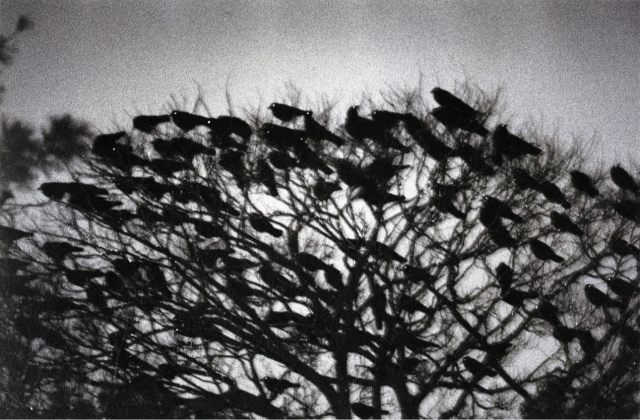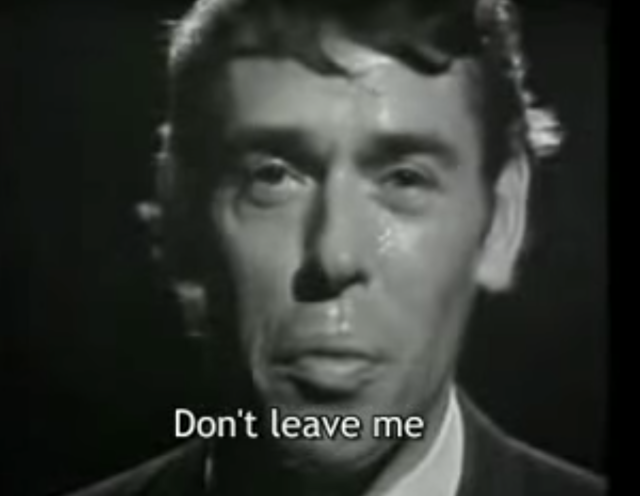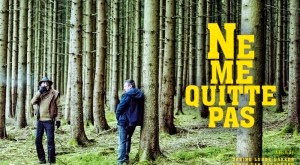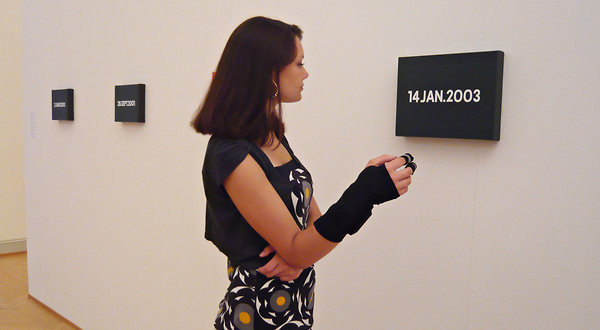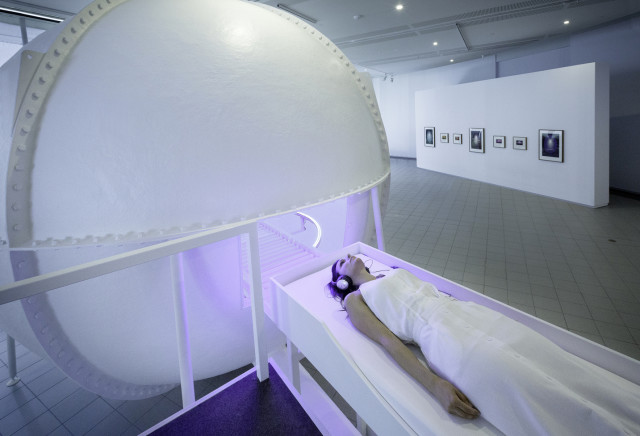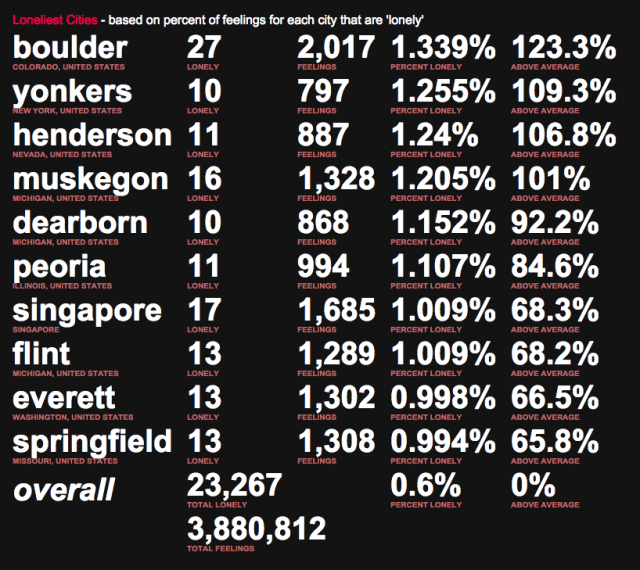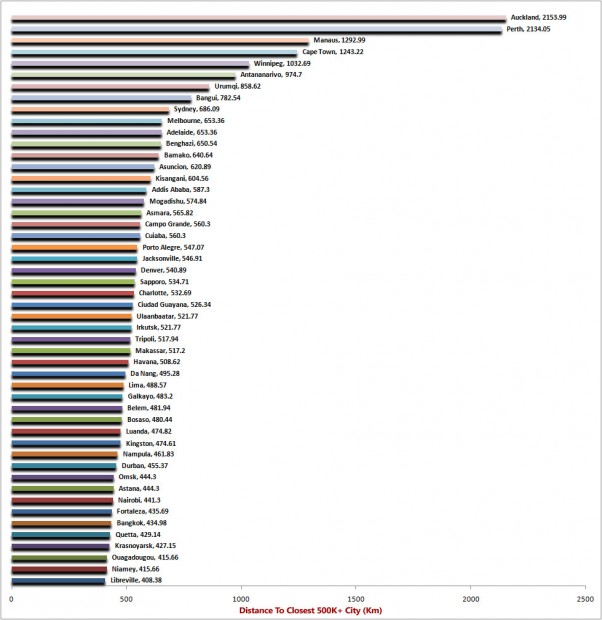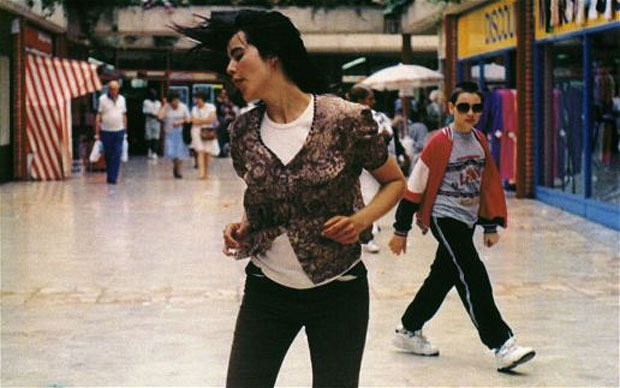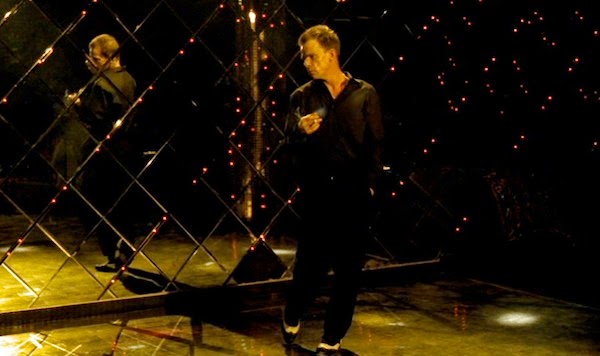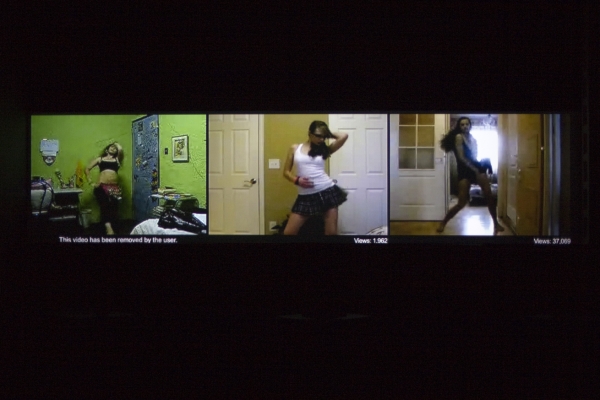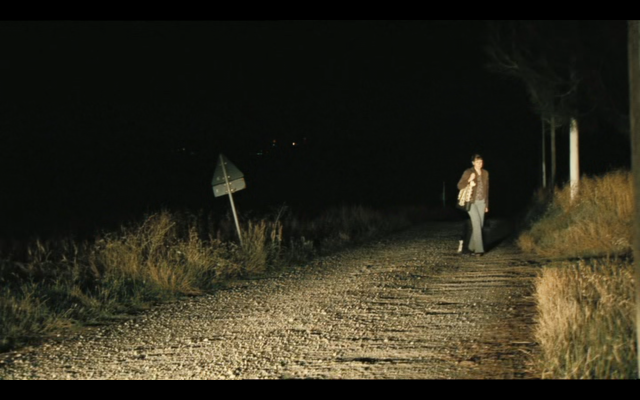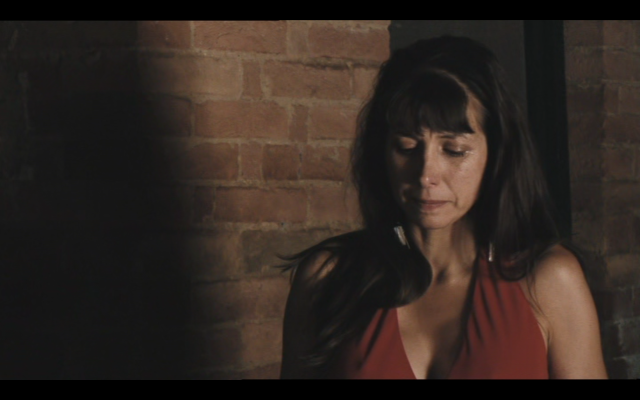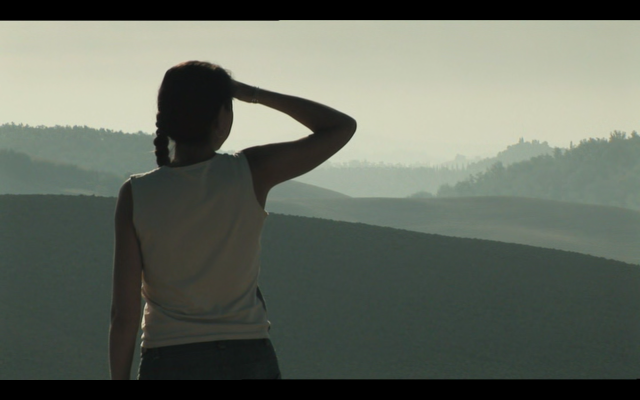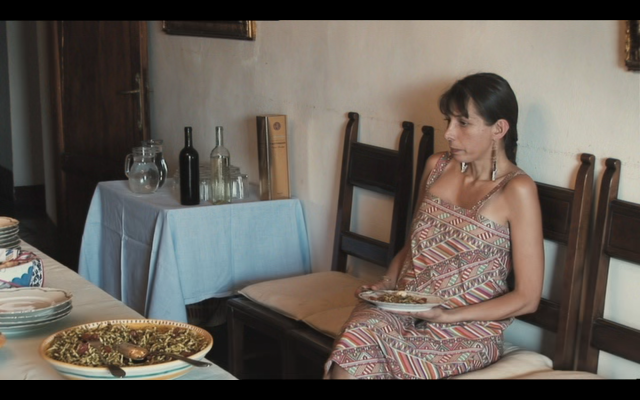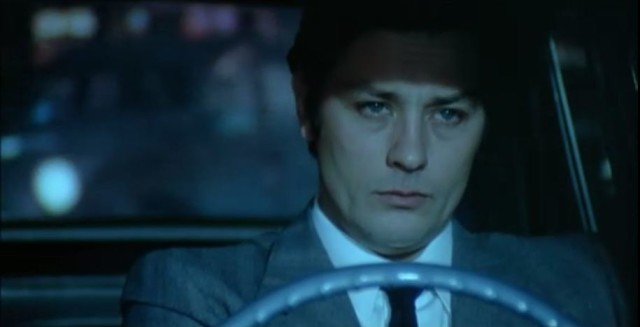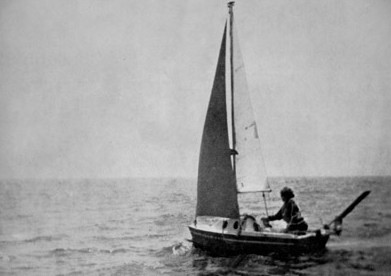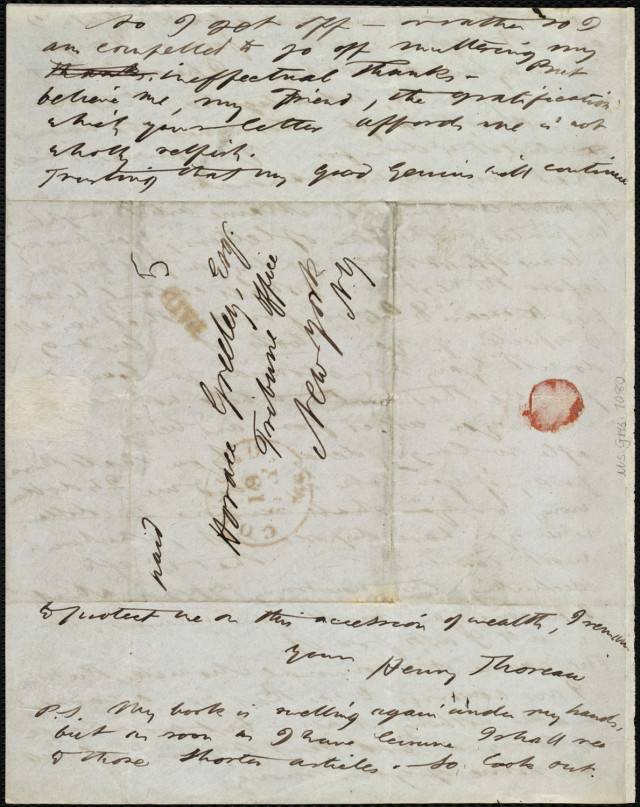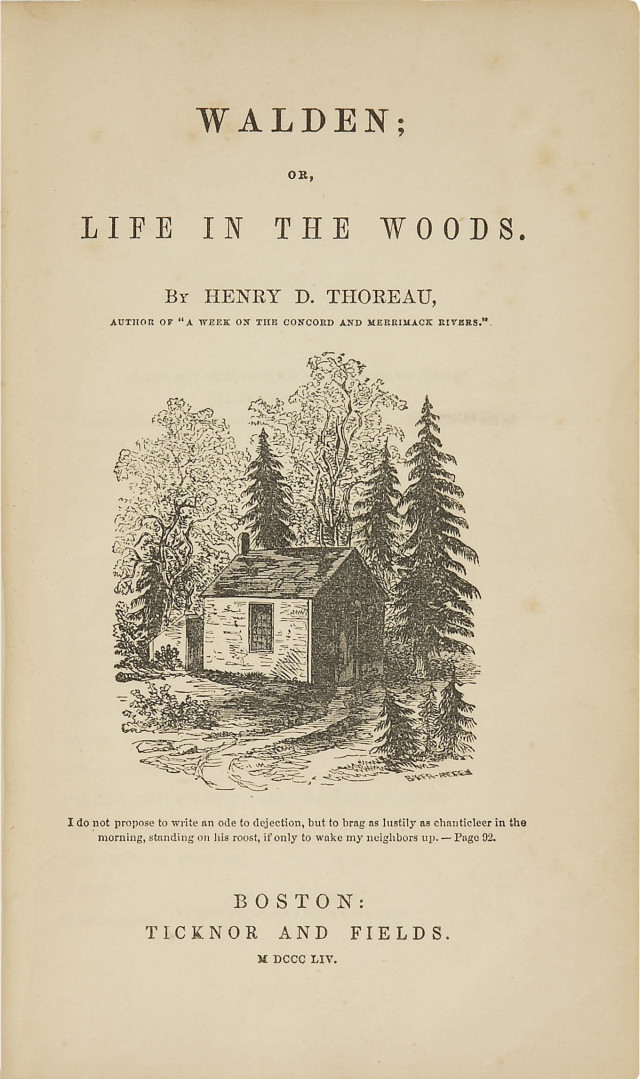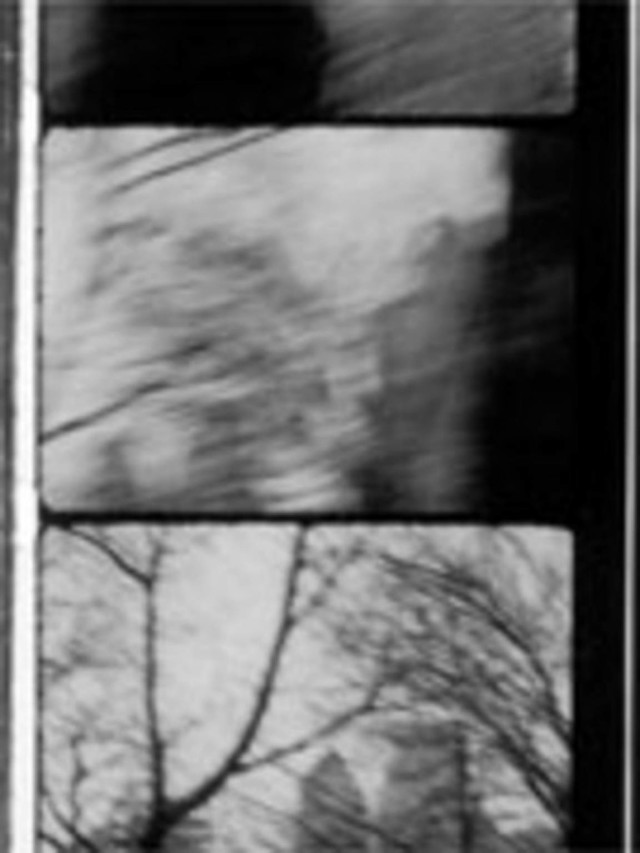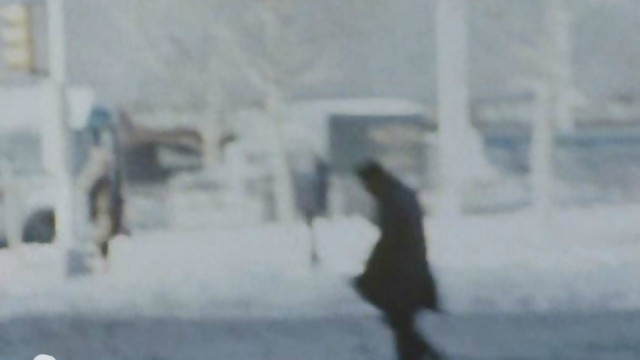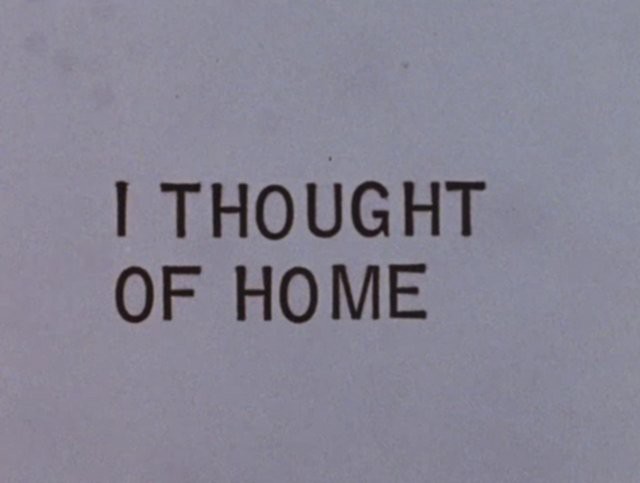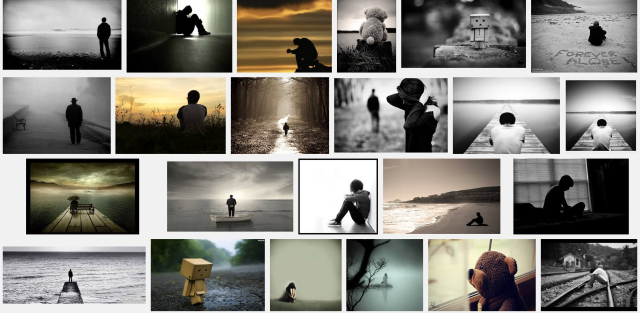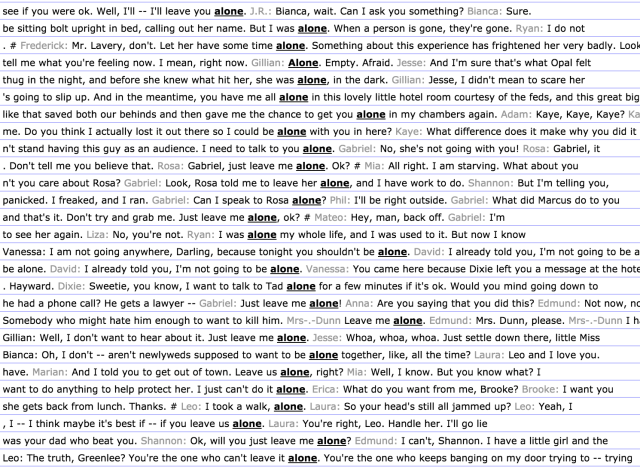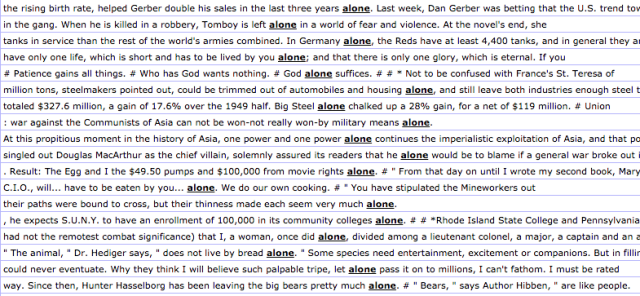The Solitude of Ravens: Masahisa Fukase
The following information is largely gleaned from an article in The Guardian, July 14, 2015.
Japanese photographer Masahisa Fukase, photographed his wife Yoko everyday. Until the day she left him.
“When Yoko left him in 1976, Fukase began drinking heavily and suffered bouts of debilitating depression. In the immediate months after her departure, he photographed ravens he saw at train stations on his way home to Hokkaido with the same single-minded intensity that he had photographed her. He continued photographing them until 1982, by which time he was remarried. In Japanese mythology, ravens are disruptive creatures, omens of turbulent times, but here they are symbols of lost love and almost unendurable heartbreak.”
In 1992, Fukase fell down the stairs at a bar and was in a coma for 20 years before dying in 2012.
ne me quitte pas
Jacques Brel sweats it out as he implores the subject of his song not to leave him, Ne me quitte pas. Apparently he denied this was the meaning and rather it was a lamentation on the cowardice of men. In one of my favourite scenes from the 2013 Belgian documentary, Ne Me Quitte Pas, (and perhaps ever in a film, not least for some tragic resemblance to one from my own life) one of the central characters returns home one night drunk, puts on Roxette’s Listen to Your Heart and sits by the window eating an ice-cream.
sologamy or self-marriage
An unverified Wikipedia entry notes the practice of sologamy in traditional African tribal cultures. While I didn’t quite find any more information about this practice, it does seem to be a practice in Western culture and Japan- a celebration of singleness, aloneness, commitment to oneself. In China, an unmarried woman over the age of 27 is called a ‘leftover woman’, in Japan they are called ‘loser dogs’.
Single, sad? Solo weddings pamper both wives and unmarried ladies
No fiance? No problem. She got dressed up and had some photos taken — of herself, alone.”
I married myself
long-term solitary confinement
On “Legislative Art”: Laurie Jo Reynolds and Tamms Year Ten
TAMMS YEAR TEN
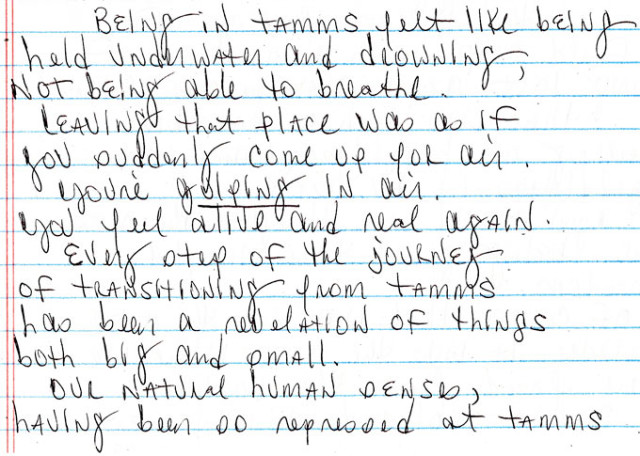 US artist, Laurie Jo Reynolds calls her art legislative art. It’s a practice which aims to create art which brings about social and governmental change. In her words there should be “no distinction between art and politics”.
US artist, Laurie Jo Reynolds calls her art legislative art. It’s a practice which aims to create art which brings about social and governmental change. In her words there should be “no distinction between art and politics”.
Tamms Year Ten is an ongoing project and collaboration between prisoners, artists, families and citizens to lobby for change to the policy that allows the Tamms supermax prison in Southern Illinois to keep prisoners in permanent solitary confinement.
At the time of the initiation of this project, Tamms had been operational for ten years. “Now, ten years later, over one-third of the original prisoners have been there for a decade. They have lived in long-term isolation—no phone calls, no communal activity, no contact visits. They only leave the cell to exercise alone in a concrete box 2 to 5 times per week. They are fed through a slot in the door”.
Photo Requests From Solitary
One of the activities from this ongoing project was Photo Requests From Solitary. In this project, prisoners requested and image they would like to see, real or imagined, and artists outside the prison fulfilled their wishes. This project has since been expanded to other prisons around the US as part of the campaign to stop the systematic use of prolonged solitary confinement.
art when (kind of) alone
In a quote that I can remember the essence of but not exactly the correct sequence of words, Iranian filmmaker, Abbas Kiarostami spoke of the power of the cinema space as one which you are both alone and with others and a connection to psychoanalysis. This is one reason why the individual home screen has not replaced the shared experience of the dark theatre or cinema. And also why often I like to see films alone.
This idea of experiencing art alone and yet together can be seen in a number of projects that use audio and headphones to isolate the viewer/hearer/experiencer from others. The 2014 MKA production of The Trouble With Harry used the Silent Disco approach of giving each member of the audience a feeling of aural isolation through headphones with dialogue and soundscape. This effect has also been used with great success in the sound and walking works of Janet Cardiff & George Bures Miller. Sound seems to facilitate this experience particularly well.
In New York Times article Heart-Pounding Art, Seen Solo, a science meets art experiment in galleries tracks individuals’ biometric responses to viewing art alone compared to with others. When alone, these tests proved, people spend more time looking at art and experienced more emotions.
James Turrell’s Bindu Shards, or perceptual cell, while looking like an implement for a medical body scan is an art experience for ONE.
I removed my shoes and lay on the bench, was fitted with headphones and slid into the orbic chamber. James Turrell aims to create these immersive light works with his mantra of “no object, no image, no focus”.
I had chosen the “soft” setting, fearing the “hard” might take me back into some techno-dance-drug past. Soft was enough for me, anyway, with its waves of pleasing strobes and sounds, colour fields, and pulses. I felt the joy of immersion and a joy of absence. I was reminded of something Yoko Ono had said, something that had made a great impression on me when I was studying art. It was something about art and the world always adding something, and through her work she wanted to remove something.
I lived in Korea for a year, from 2001-2002. A year of great difficulty (terrible even). But what we looked forward to each Friday night was the Norebang session (usually hours in length, assisted by cheap soju, and in pod rooms modeled on H.R. Giger’s alien forms). And every Saturday we saw as much art as we could. This was a piece I remember by Korean artist, Lee Bul, called Live Forever. The individual sits in a souped- up karaoke pod, their singing voice encapsulated and contained. Silenced from those on the outside. The music videos play with the lyrics for other viewers to see, in an experience alone and shared. Karaoke/norebang is usually a shared and communal experience though I often met people in Japan who would go and spend an hour alone, as a stress-release, singing to the screen.
Blast Theory’s Karen is an interactive app with an individuated experience. Karen is a life coach (or is she?). She is also an over-sharer. In one of their previous works, Rider Spoke, the individual experience becomes connected to other users through the sharing of stories about place and memory- facilitated and mediated through the act of cycling around urban spaces. Karen makes you feel that it is just about you and her. She asks you questions which you either answer by typing words onto the screen, selecting from a range of given answers or or using the slider on the screen to indicate degrees to the statement provided. Karen speaks directly to camera (you) reducing the mediated distance, breaking the fourth wall. This was also used in the excellent, City of Forking Paths augmented reality- audio-walking tour work by Janet Cardiff & George Bures Miller commissioned by the Sydney Biennale (2014).
#alone
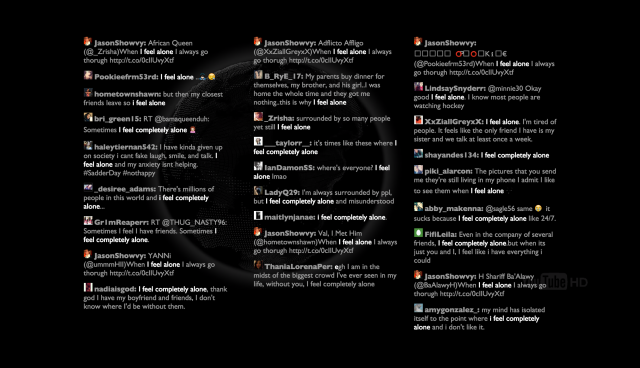
In a similar vein to I Feel Fine’s analysis of blogged feelings and also looking at the examples of corpus language use, this project, Know Your Exit combines crowdsourced singing, clapping and storytelling with live tweets.
This is a screenshot of several examples of tweeted ‘aloneness’ on April 12, 2015.
Jonathan Franzen: How To Be Alone In Our Techno-Consumer Culture
“In junior high I spent a lot of time eating lunch alone. I feel I’m still that person. And all the other people who ate lunch alone in their own junior highs, who really were subverting the dominant paradigm, whether they liked it or not: those people are all my friends for life.”
Lonely Cities
In Jonathan Harris and Sep Kamvar’s We Feel Fine project, the top 10 loneliest cities (based on reported feelings posted in personal blogs) are listed.
In another study, based on geographical location, Auckland is the loneliest (most isolated city) in the world.
Dancing Alone
Gillian Wearing dances alone, in a shopping mall in Peckham, UK. In the end of Claire Denis’ Beau Travail, Denis Lavant also dances alone. And in Natalie Bookchin’s Mass Ornament hundreds of people dance alone in front of their webcams, seemingly with abandon. These are uploaded to Youtube.
How does the alone dance differ from the dance one dances when not alone?
Cinematic Aloneness
Unrelated: Joanna Hogg
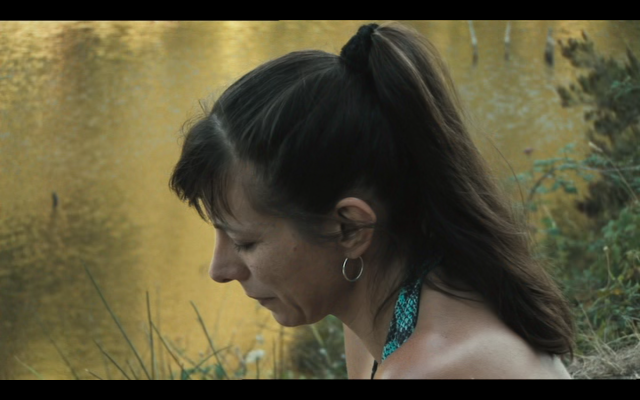
In Joanna Hogg’s debut feature, Unrelated, Anna arrives alone for a summer holiday with an old friend and her family in Tuscany. No reason is given to why she has left her husband at home, only small details overheard through parts of conversations we hear her having with him from various dirt roads and mountain backdrops on her runs. While more drawn to the group of teenagers at the villa, fuelled by flirtation and self re-invention, she clearly doesn’t feel comfortable with either the ‘olds’ or the ‘youngs’. She often inhabits the cinematic frame alone, while in the company of others. Shortly after the film’s climax she leaves the beauty of the villa for a cheap hotel room where she finally confesses to the realisation she will never have children, a situation equated with profound and ultimate aloneness.
Un Flic: Jean-Pierre Melville
“… Coleman just stares at infinity… you sometimes wonder what’s going on inside. He has a working relationship with “criminals”, yet as he drives the night streets of Paris in Car 8, his destination is always Loneliness”
Lawrence Russell, Fcourt
Solo Voyages on the Ocean
In 1975, Dutch artist Bas Jan Ader set off on a solo voyage in what was to be the smallest ever boat to cross the Atlantic Ocean. This artwork was called In Search of the Miraculous. Three weeks into the trip, he lost radio contact and ten months later, the boat washed up on the Irish Coast. His body was never found. His life and disappearance is told in the film, Here is Always Somewhere Else.
It is unknown what the artist’s intentions were, and speculation continues on whether the project was in search of the sublime, suicide, or wild ambition.
 British artist,
British artist,
In Search of the Miraculous, 1975
Tacita Dean, made a series of works, Disappearance at Sea, inspired by the mysterious disappearance of solo yachtsman, Donald Crowhurst.
“For many, Donald Crowhurst is just a cheat who abused the sacred unwrittens of good sportsmanship. But for some, it is more complicated than this and he is seen as much a victim of the Golden Globe as the pursuer of it. His story is about human failing, about pitching his sanity against the sea, where there is no human presence or support system on which to hang a tortured psychological state. His was a world of acute solitude, filled with the ramblings of a troubled mind.”
Tacita Dean, 1997
Teignmouth Electron by Tacita Dean, 1999.
National Maritime Museum, Greenwich, London
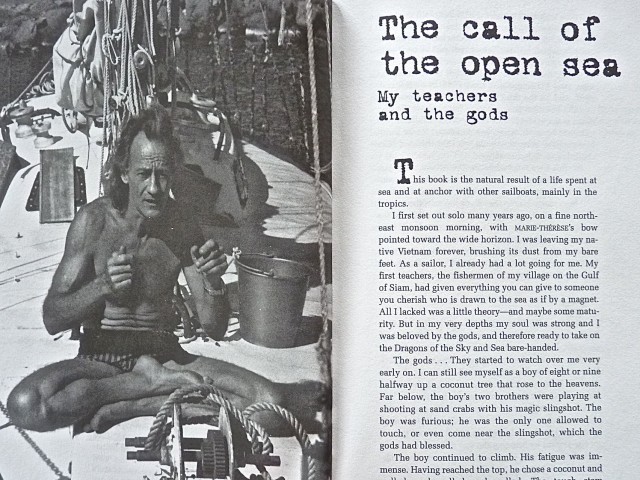 The tragic, strange and true story of Donald Crowhurst is told in the documentary, Deep Water by Louise Osmond and Jerry Rothwell. The kind of aloneness depicted in the Golden Globe voyages would be harder to experience now, due to technology. Another competitor, French philosopher and sailor, Bernard Moitessier was on the home straight, and looking like he would compete the circumnavigation in the quickest time when he turned his boat around and headed south to circle the globe once again. He eventually ended this voyage in Tahiti, where he lived for the rest of his life.
The tragic, strange and true story of Donald Crowhurst is told in the documentary, Deep Water by Louise Osmond and Jerry Rothwell. The kind of aloneness depicted in the Golden Globe voyages would be harder to experience now, due to technology. Another competitor, French philosopher and sailor, Bernard Moitessier was on the home straight, and looking like he would compete the circumnavigation in the quickest time when he turned his boat around and headed south to circle the globe once again. He eventually ended this voyage in Tahiti, where he lived for the rest of his life.
“On your own, you can discover who you really are.” Bernard Moitessier
Walden (I)
Walden, written by Henry David Thoreau on his time spent alone in the woods, living the simple life.
“ I have never felt lonesome, or in the least oppressed by a sense of solitude, but once, and that was a few weeks after I came to the woods, when, for an hour, I doubted if the near neighbourhood of man was not essential to a serene and healthy life. To be alone was something unpleasant. But I was at the same time conscious of a slight insanity in my mood, and seemed to foresee my recovery. In the midst of a gentle rain while these thoughts prevailed, I was suddenly sensible of such sweet and beneficent society in Nature, in the very pattering of the drops, and in every sound and sight around my house, an infinite and unaccountable friendliness all at once like an atmosphere sustaining me, as made the fancied advantages of human neighbourhood insignificant, and I have never thought of them since. Every little pine needle expanded and swelled with sympathy and befriended me. I was so distinctly made aware of the presence of something kindred to me, even in scenes which we are accustomed to call wild and dreary, and also that the nearest of blood to me and humanest was not a person, that I thought no place could ever be strange to me again.”
Walden (II)
Jonas Mekas, a filmmaker from Lithuania, came to New York in 1949 with his brother as refugees. His camera documented his new life, writing his life as diary. He filmed and wrote poetry. This is a practice he continues.
Jonas Mekas: Walden: diaries, notes & sketches
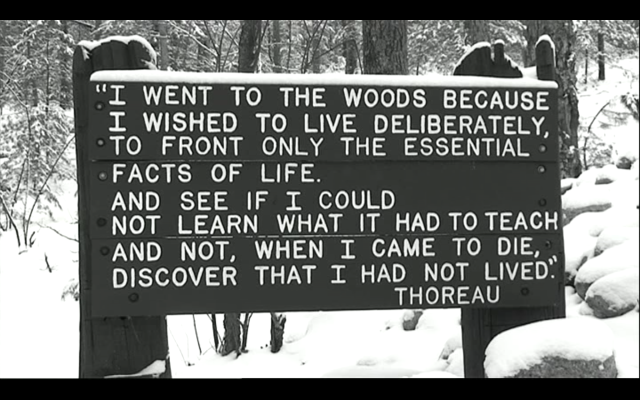 Walden (III)
Walden (III)
In his film letter to Jonas Mekas (from The Complete Letters), José Luis Guerin visits Walden pond.
Kodokushi (lonely death)
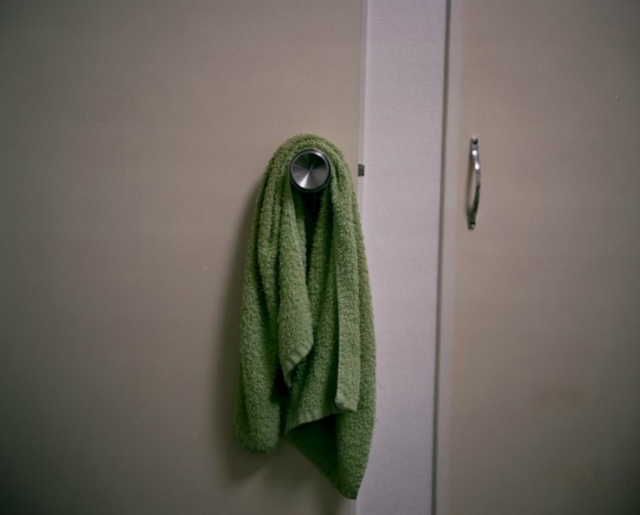
Kodokushi is the Japanese term for the phenomenon of ‘dying alone’. The term apparently was coined in the 1980s and in Tokyo alone in 2008, there were more than 2,200 ‘lonely deaths’ reported. With an aging population, negative population growth and a severe shortage of nursing homes, more and more elderly people live alone in densely populated cities with very little human contact.
Image from the scene of a lonely death: Soichiro Koriyama (Kodokushi: Apartments of Lonely Deaths in Tokyo)
While on the increase in Japan, there are other well-documented cases of dying alone. Yvette Vickers, former Playboy Playmate turned B-Grade movie star was found in 2011 in a mummified state. Apparently her computer screen was still on and her phone record showed that her last calls in the preceding months had been to fans rather than friends and family.
Carol Morley’s Dreams of a Life attempts to piece together the life of Joyce Vincent, found 3 years after her death in a flat in London through interviews with people who knew (or didn’t really know) her and reconstructions of perhaps her last days and weeks.
More insights are given into ‘lonely deaths’ through the experiences of forensic cleaners:
Living in solitude, dying alone: what I learned from the scene of an unattended death
This American Life: 346 Home Alone
Doing it Alone: Adam Phillips
“Leo Bersani once said in an interview that the reason most people feel guilty about masturbation is because they fear that masturbation is the truth about sex; that the truth about sex is that we would rather do it on our own or that, indeed, we are doing it on our own even when to all intents and purposes to be doing it with other people. The desire that apparently leads us towards other people can lead us away from them.”
Dining Alone
There seems to be recent celebration of the act (art) of eating alone. I’m not sure how many newspaper articles and blog posts I have read on this but a quick google search returned such hits as:
The new normal: have we finally embraced dining alone?, Party Of One: What Makes People Who Eat Alone Stronger, You’re the only person who will notice if you’re dining alone. So enjoy it, The perils and pleasures of dining alone and In defence of eating alone
and even tips on how to do it:
THE ESSENTIAL GUIDE TO DINING ALONE
Or introducing the Amsterdam cafe (and soon to be in Britain) for only solo diners:
‘Table for one, please’: would you ever dine out alone at night in Britain?
Success guru Keith Farrazzi, however, advises in his book: NEVER EAT ALONE.
 On my recent trip to the UK, I felt I had finally embraced the experience of eating alone, although the photos on the left might show evidence that I hadn’t fully engaged in the experience.
On my recent trip to the UK, I felt I had finally embraced the experience of eating alone, although the photos on the left might show evidence that I hadn’t fully engaged in the experience.
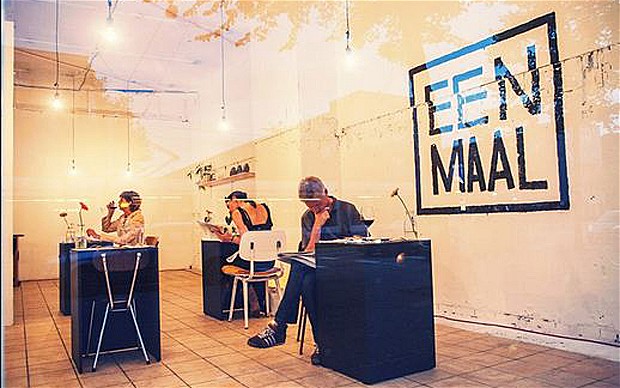
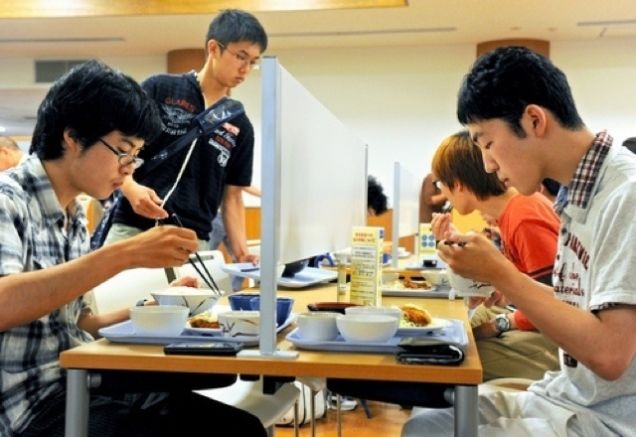
a cafe in Amsterdam for lone diners partitions for the segregated eater at Kyoto University
Dining Alone, Japanese Style: from newspaper – December 2014
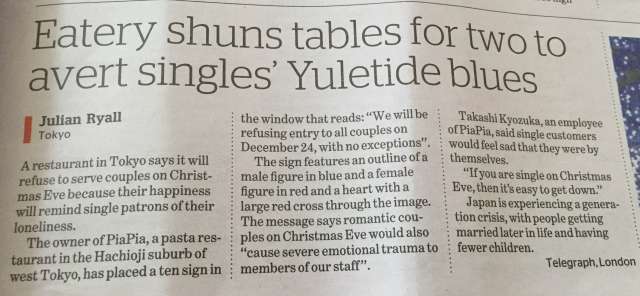

Google’s Idea of Alone
Top 23 Google images when searching for alone.
Note: colour palette, solitary figure in nature, receding horizon, teddy-bear, box-head figure, piers and paths, fog, equated with depression, standing in a boat.
On Montaigne!
Between the chapters “That we laugh and cry for the same thing” and “A consideration upon Cicero”, is the chapter “Of Solitude”. Here he muses on whether to be in the world, or retreat, perhaps concluding that solitude is better suited to being older.
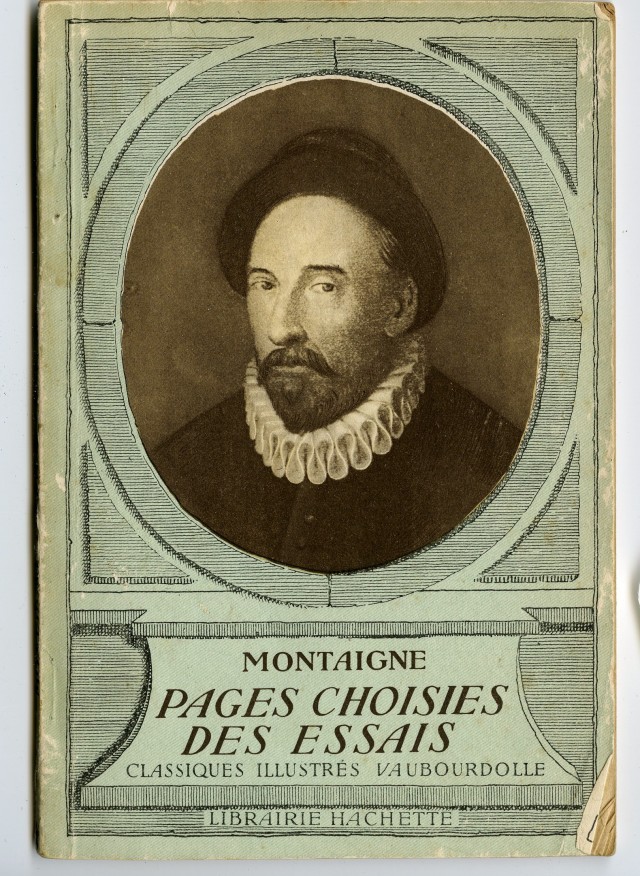

I had thought to write my own Montaignian chapter; “On how wine can taste suddenly so different when alone- and on a summer day out of a plastic cup at a budget hotel in the South of France”.
Corpus Language
Of 100 million words from American Soap Operas (2001-2012), ‘alone’ is mentioned 42663 times
In TIME Magazine, the word ‘alone’ is mentioned 14292 times between 1920- 2006. The 1950s have the highest incidence of ‘alone’ usage with 2343 examples. Since then, the use has been on the decline. Does this mean anything?
In my emails from the year 2000, ‘alone’ only appears 4 times, form 3 different people:
Spend some time alone every day.
I told him straight to just leave me alone and stop listening to half truths.
I haven’t had to wake up alone without you.
Oh the black cross of a ship. Alone. (and that is Neruda)
___________________________________________
“I live alone.”
“I thought so.”
“Really? What did you think when you thought about that?”
“Well, I thought: I think she lives alone.”
When you live alone people are always thinking they can stay with you, when the opposite is true: who they
should live with is a person whose situation is already messed up by other people and so one more won’t matter
The First Bad Man (18-19)
Miranda July
______________________________________________________________________________________________
The (Alone) Wanderer…(in 3 parts)
